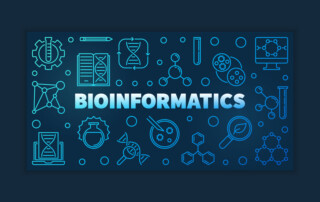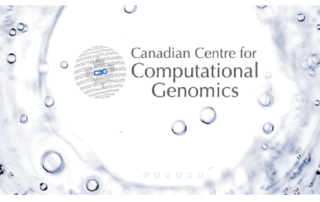Stay tuned to our blog to learn about upcoming events and interesting developments in the field of genomics. Please note that posts are published in their original language only.
A beginner’s Guide to Manual Curation of Transposable Elements
A beginner's Guide to Manual Curation of Transposable Elements In the study of transposable elements (TEs), the generation of a high confidence set of consensus sequences that represent the diversity of TEs found in a given genome is a key step in the path to investigating these fascinating genomic [Read more]
C3G Bioinformatics Platform
C3G Bioinformatics Platform at the Rosalind and Morris Goodman Cancer Institute With next-generation sequencing and other high-throughput technologies revolutionizing life sciences and health care research, data processing and interpretation, rather than data production, has become the major limiting factor for discovery and innovation. Large genomics centers, and increasingly smaller [Read more]
Website re-design
New C3G Website By David Anderson Re-designing a website can be a complex task, especially an existing website. There are many factors to consider during the process. Such as the content, structure, navigation, functionality, images, and the goal and mission. In the article, I will explain the process behind designing [Read more]
The SecureData4Health (SD4H) website is LIVE
The SecureData4Health (SD4H) website is LIVE! SecureData4Health (SD4H) launched its new website. SecureData4Health (SD4H) is a secure cloud infrastructure aimed at providing high-throughput technologies for easy and secure genomic health data sharing and advanced analytics to maximize scientific discovery. Visit now: sd4health.ca Published: January 28, 2022
Gene fusion meta-calling with MetaFusion
Gene fusion meta-calling with MetaFusion The Toronto Node of C3G has developed MetaFusion, a flexible meta-calling tool that amalgamates outputs from any number of fusion callers. Designed to overcome inconsistencies among frequently used fusion callers, MetaFusion is among the first ensemble fusion calling tools currently available. Individual results from [Read more]
Working with Genomics Coming From a Pure Software Engineering Background
Working with Genomics Coming From a Pure Software Engineering Background by Sebastian Ballesteros A little bit about my background While pursuing a Bachelor of Science in Software Engineering at McGill University, I joined the Canadian Centre for Computational Genomics as an intern in 2020. I started working at the [Read more]
A small number of early introductions seeded widespread transmission of SARS-CoV-2 in Quebec, Canada
A small number of early introductions seeded widespread transmission of SARS-CoV-2 in Quebec, Canada In April 2020, the Coronavirus Sequencing in Québec (CoVSeQ) consortium was assembled to sequence SARS-CoV-2 genomes in Québec to track viral introduction events and transmission within the province. Jose Hector Galvez, Pierre-Olivier Quirion, Paul Stretenowich, [Read more]
Adapting to remote and electronic means of patient care
Adapting to remote and electronic means of patient care Electronic and remote means of healthcare have become a staple over the past year, and the Toronto Node of C3G has been involved in several efforts to facilitate and improve remote patient care. In a joint effort with Smart Cancer [Read more]
Platforms to help identify asymptomatic carriers of COVID-19
Platforms to help identify asymptomatic carriers of COVID-19 Identifying asymptomatic carriers of the novel coronavirus is crucial in preventing the spread of COVID-19, particularly in healthcare settings. C3G’s Toronto Node has developed several applications for this purpose across various health institutions. The Mt. Sinai Hospital and Lunenfeld-Tanenbaum Research Institute’s Stay-Healthy-At-Work [Read more]
Understanding why persons living with HIV are at increased risk of tuberculosis
Understanding why persons living with HIV are at increased risk of tuberculosis Persons living with HIV (PLWH) are at increased risk of tuberculosis (TB). HIV-associated TB is often the result of a recent infection with Mycobacterium tuberculosis (Mtb) followed by rapid progression to the disease. Alveolar macrophages (AM) are the first cells [Read more]










